Have you thought about what happens when you expand internationally?
Sure, international expansion is a natural evolution of most businesses and an exciting signal of growth. But it also poses a number of questions:
- How will you work with customers in different countries?
- What happens if they don’t speak the same language as you?
- How will we work across time zones?
- Are we equipped to take on the extra workload?
This is where having a defined international customer service strategy comes into play. And with 71% of customer service leaders believing that multilingual (or international) customer support increases customer satisfaction, perhaps it's time to start paying attention.

Here are some reasons why international customer service can make a significant impact not only on customer satisfaction, but customer retention, too:
- 29% of businesses believe they’ve lost customers because they don’t offer international customer service.
- 58% of customers are thought to be more patient with both waiting for and engaging with support ticket responses, if it is in their native language.
- 62% of customers are more likely to tolerate problems with a product, if they can interact with the support team in their own native language.
However, despite the positive impact that international customer service can have on your business – only 19% of organizations provide it for their customers. 🤷
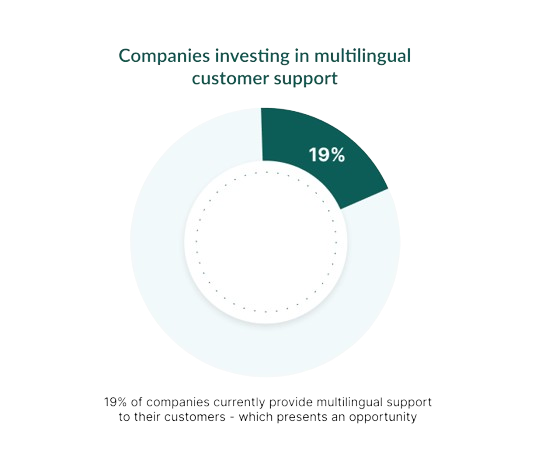
This presents an untapped opportunity for companies that want to differentiate themselves from their competitors and fuel international growth. And yet, the challenge for most companies is not knowing how to get started with international customer service.
So, how do you start?
5 international customer service strategies
We’ve put together a guide that outlines 5 strategies that you can start using to tap into the opportunities that international customer service can offer your company.
1. Use native language to boost retention
As you develop your international customer base, you may be tempted to operate purely in your own language, particularly in business.
The truth is that even though 1.5 billion people are thought to speak English, less than 400 million people use it as a first language.
This means that the majority of your international customers are unlikely to see English as their native language. And failure to acknowledge this fact could cause you significant churn issues.
This is because 70% of customers are more loyal to companies that offer them native language support.

The demand for native language support is really high. Research shows that 35% of customers would switch products to a competitor of yours, so that they could receive support in their own language.

If your company is investing the time, effort, and money to go after an international expansion of your customer base, then it makes sense to consider how you’re going to retain these new customers in the long term, doesn’t it?
So, in order to boost retention and protect yourself against significant churn, one of your key considerations in any international customer service strategy needs to be how you use customers’ native language in your support processes.
2. Use AI translation to help service agents
One of the key issues you’re likely to encounter, particularly in the early stages of your international expansion plans, is that your existing support and service agents perhaps don’t have the language skills to communicate with customers in other countries.
It may be too soon to hire dedicated agents to operate in specific languages or territories, so what is the solution?
Yep, this is where technology comes to the rescue, in particular – AI translation.
While, AI translation is ultimately no substitute for professional support agents who understand both the language and culture of your international customers, it is still a hugely valuable tool that offers 3 key advantages.
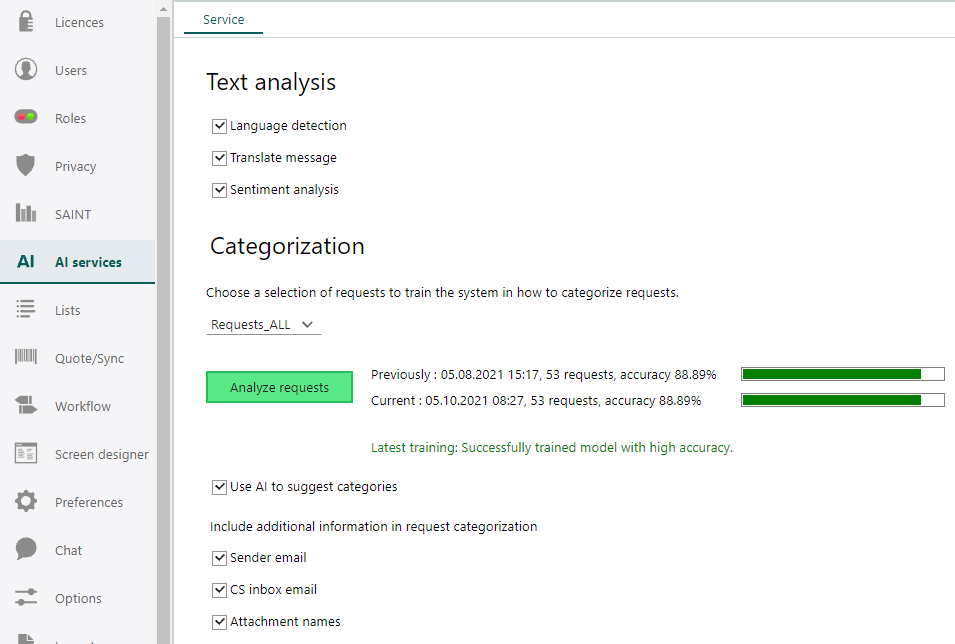
- Use the language detection feature to understand which language a support ticket is using, and make sure it is then assigned to the right person in your team.
- Use the sentiment analysis feature to understand the context of the ticket (regardless of a language used) to escalate the ticket where necessary.
- Use language translation to give all your team members insights into the content of the ticket. This is useful both in terms of offering front line support, but also for spot checks by management, reporting, or further analysis.
Even when you do recruit language and culture specialists, you can still use AI as part of your workflow to make them, as well as the rest of your team, even more efficient.
3. Leverage automation for increased efficiency
In the same way that you can use AI technology to make your team more efficient – and better serve the needs of your customers – you can also do the same with automation technology, too.
It’s no secret that 93% of customer support teams are already making use of automation to increase their efficiency. But how can you use automation specifically for international customer service?

Not only can you use automation to pick up the slack when it comes to the burden of repetitive tasks that all support teams face, but there are also 3 specific approaches you can use right now to supercharge your international customer service efforts:
- Automated ticket triage workflows
If you’ve ever worked as a tier 1 support representative, then you’ll know firsthand that CS tickets are not the same.
Depending on a variety of factors including who the customer is, their service level agreements, or the type of issue raised in the tickets, you’ll need to prioritize, categorize and assign tickets in a process known as “triaging”.
This type of ticket management used to be a completely manual process, but thanks to automation your team can now focus on working more closely with your customers instead – regardless of which language the ticket is written in.
Using automated workflows you can use AI to understand the language the ticket has been written in, as well as the sentiment or context, and then ensure that the ticket has been assigned to the right person in your team for follow up.
- Quickly respond to repetitive tickets on autopilot
It doesn’t matter where your customers are based, or what language they speak, chances are that many of them will have similar requests that you’ve seen countless times before.
One way to use automation to counteract this is to prepare templated responses in multiple languages for your most common support tickets.
You can then leverage automation to send automated email responses based on these templates.
Not only will your customers get a rapid reply to their support request in their own native language (which boosts customer satisfaction), but your support team will be able to spend more time focusing on more complex support requests.
- Automated self-service experiences
Regardless of location, 88% of your customers expect to be able to use self-service support, while 63% of them actually prefer using self-serve over speaking directly with a support agent.
This presents you with an opportunity to not only meet your customers’ needs, but also to improve the profitability of delivering international customer service, too.

Three self-service support options you can introduce today (in 15+ languages) using a tool like SuperOffice Service include:
- Knowledge base – full of FAQ content and helpful “how to” guides
- Chatbot – trained on your knowledge base to offer helpful solutions
- Customer portal – log in to get access to all content and support materials
With these self-service options you can quickly establish a robust support offering for your international customers, even before you’ve recruited a team of dedicated language and culture specialists.
4. Hire language and culture specialists as you scale
International customer service isn’t just about making sure you’re offering native language options for your customers – it’s much deeper.
Different countries and territories not only have their own language, but they have their own culture and way of doing things, too.
In fact, research shows that 60% of customers consider language as being a critical factor in customer service satisfaction.
Meanwhile, an incredible 70% of customers are likely to engage with a business that demonstrates cultural sensitivity in their customer service.
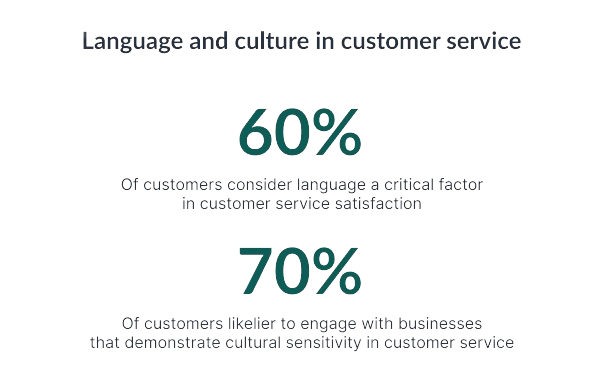
This means that cultural support is arguably even more important than native language support when it comes to customer satisfaction and retention!
With this in mind, as your international presence starts to scale, you should strongly consider hiring not just language experts to support your customers. Where possible these people should also have living, breathing, experience of the culture of that country or territory.
Without the combination of both language and culture skills, you run the risk of failing to understand subtle cultural differences and potentially alienating your international customers.
5. Localize support content
Just because your customer base has changed, and you now have customers in multiple countries, perhaps speaking multiple languages, it doesn’t mean your product has changed.
You and your team have already invested countless hours producing support content for your domestic customers – it’s now time to leverage that content for the international market, too.
It’s important to make sure that you localize as much of your support (and marketing) material into the native language of your customers as possible, because 76% of customers prefer product information in their own language.
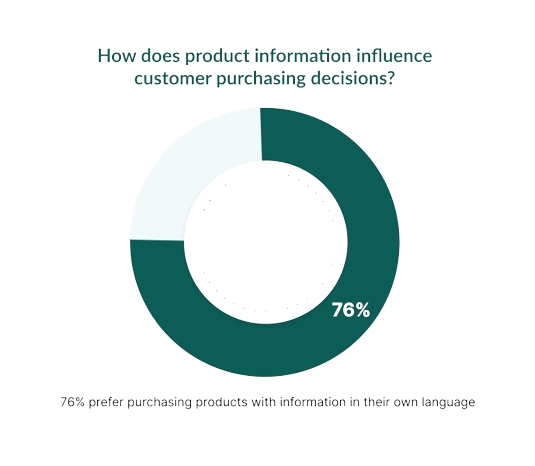
Localization is the process of both translating the product into the native language of your customers and making sure that it fits the legal, cultural, and even political requirements of that territory. This way you can create a more personalized experience for the customers in that region.
In terms of localizing support content, the best place to start is with your knowledge base. This gives your customers an easy-to-access communication channel that clearly demonstrates their native needs have been catered for.
From there, you can look to roll out other localization options, including for the product itself.
To help you get started with your localization project, SuperOffice supports localized interfaces and regional data for users in more than fifteen cultures “out of the box”. It is also extendable, so you can support other cultures or regions not included by default.
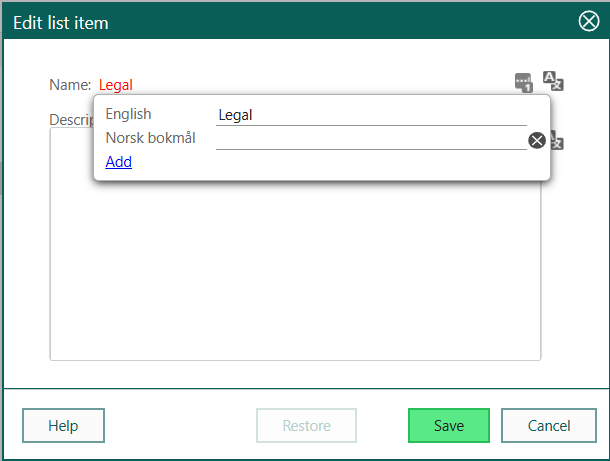
This makes it easy to kickstart your approach to localized support content and will help you enhance the experience for your customers as a result.
Conclusion
With more businesses than ever before being able to quickly expand their customer base internationally, companies need to know how to deliver high-quality customer service to match their international expansion ambitions.
More than 70% of customer service leaders see international customer service as a surefire way of improving customer satisfaction levels. Because as many as 62% of customers prefer the experience and are even willing to tolerate certain issues when service is delivered in their native language.
There’s no more excuses – international customer service matters now more than ever.



